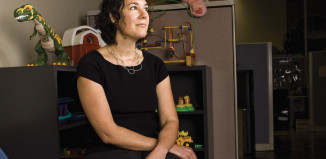Dawn Moore knows a good kitchen when she sees one. As architects tend to be, she’s part pragmatist and part artist, with definite opinions on everything from the way light works in a room to where a step stool goes.
Moore, an architect who works with Moore-Tate Projects + Design, works in residential architecture, which means there’s no room in a house with which she’s not familiar. But the kitchen holds a special place in any home, or as she said, “It’s the hardest- working room in the house; it’s the modern hearth.”
And in her line of work, she’s designed plenty of them.
So what makes a kitchen good in Moore’s eyes? To a large extent, it depends on the client’s habits and needs. How they move in their kitchen determines the precise location of appliances, even down to the kind of light flowing into the room.
“Creating a sense of home for human beings is compelling to me,” Moore said. “Especially since home means different things to different people.”
But beyond that, she can rattle off the elements that make this room work: coffee bars, which Moore describes as “lagniappe,” a Cajun word for “a little something extra.” She feels the same level of disdain for upper-level cabinets as she feels a love for coffee bars.
“At 6 foot 1 inch, if I can’t reach something and have to pull out a step stool, then the way I see it is that I have to design a place for the stepstool,” she said.
Moore not only has an idea of what her ideal kitchen would look like, she has that kitchen in real life.
“It is ridiculously simple,” she said. “A gas range, coffee bar…soapstone counters, a massive island. It’s important to invest in things you touch and see through—for instance, nice windows, which bring in nice morning light. There’s a connection to the outdoors.”
“Cooking for people: It’s chemistry to me and I love food.”
The kitchen, Moore said, is where she and her partner of three years, Kerry Tate, start a recipe together and end up with flour on the floor together, and it’s where they begin and end each day. Their home is on 10 acres along Onion Creek, so the natural light that comes into the kitchen is an extension of the beautiful outdoors they both love.
Moore likes to joke that her career in architecture began with an “A.” She had started college on a basketball scholarship at Texas A&M, with a career goal of coaching kids. But after two knee surgeries, she knew she would have to find a different path. So she enrolled at the University of Houston and began flipping through a course catalog. Accounting was quickly ruled out be- cause it had too many numbers, but architecture, not too much farther down the list, seemed to have just the right amount of numbers.
Once in architecture, she quickly gravitated toward residential work. “It took one week working in commercial architecture to know that I could care less,” she said. “For me, home is simply a much more compelling idea. Listening—really hearing—what people en- vision as the place they want to come home to, and hearing how they really wish to live there, inside and out, is the kind of learn- ing that interests me.”



































